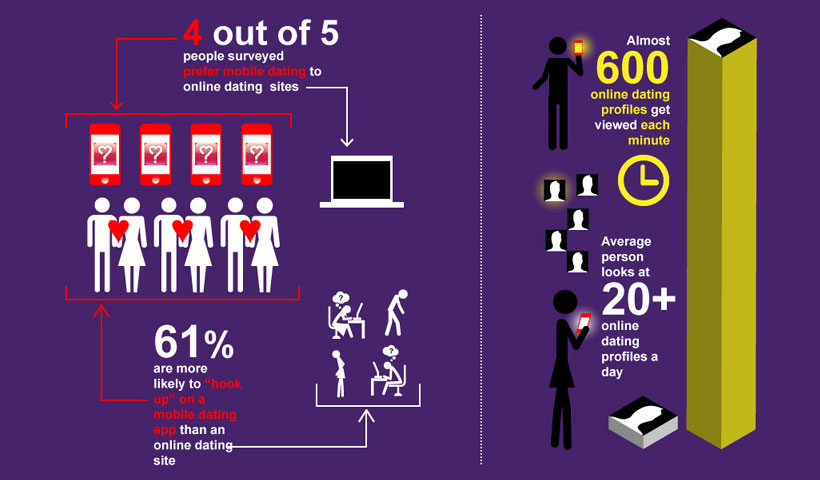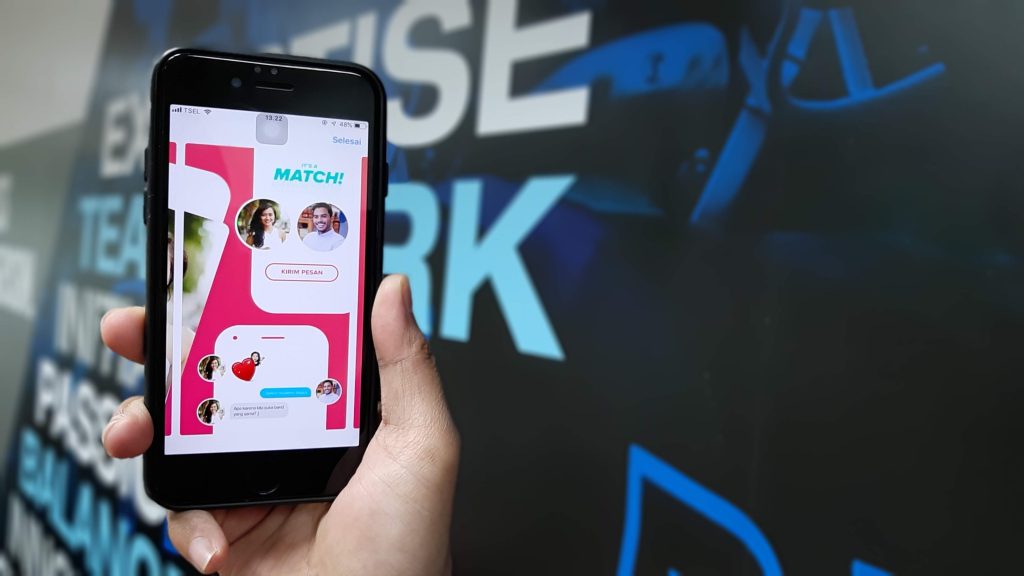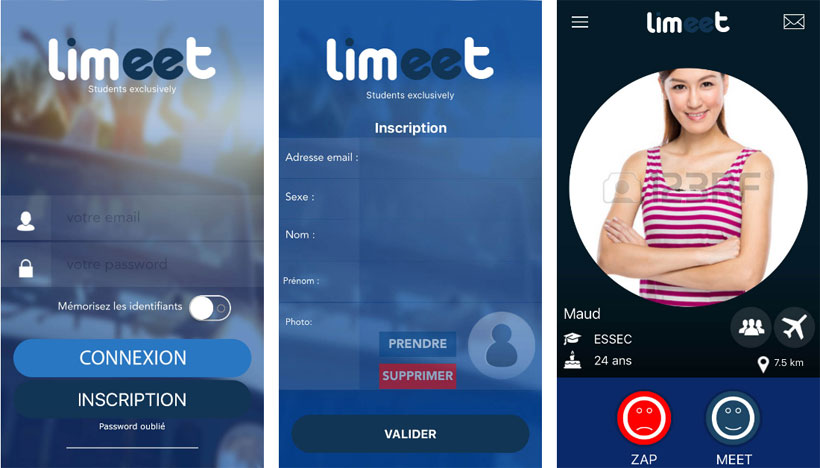
Creating a Tinder-Like App
- Posted by Kateryna Bozhenko
- On June 14, 2017
- 1 Comments
- app like tinder, create tinder, dating app
So you want to build the next Tinder? It’s not a bad market to invest in, with current valuations estimating that online dating market is worth around $2.2 billion, with mobile dating market revenues increasing from 43 to 381 million dollars between 2009 – 2016. More than 15% of adults in America are registered and active users of mobile dating applications, with 80% saying they feel it’s a good way to meet people.
Well.. congratulations, you’ve picked a burgeoning market rife with possibilities. This article will outline some of the main features and the basic “how to’s” you’ll need to think about when creating your dating app.

Before we get down to the bare necessities of how to make your own mobile dating app, note that it’s not exactly the cheapest venture at first. Even the most experienced companies can take anywhere from 12 weeks to 12 months depending on the number of features and clients’ needs. For 6 months, when aggregating the total cost of design, development and testing costing it will cost you around $60,000, so keep your budget in mind through the development process, and choose the features you’ll host accordingly.
Killer Features
We’ll start with the features your mobile dating app will need to be successful.
Most of them require you to sign in though Facebook or Instagram, upload information about yourself, such as your employment, your school and will perhaps get you to list basic information about yourself (e.g. your name, age, where you live) and let you set your gender, age, and location preferences (normally between 1-200 km).
Dating apps let users like/dislike people by swiping left or right, and potentially “super-like” at least one a day (if you want to show keen interest). The app itself works a little like Whatsapp and lets you sent your chosen people messages, emojis, gifts etc. through an inbuilt chat system.
Here’s a list of basic features you should consider implementing:
- Sign up/Login through Facebook
- Manage User profile and set discovery preferences: Thinking about making an extended bio to allow people to get a better idea of what they’re swiping, for example
- Swipe to Like/Dislike a profile
- Real Time Chat feature when both users like each other profile
- Push notifications (which informs users when a new match has been found)
- Geopositioning/GeoTagging
- Voice Chat
- A Match Making Algorithm: which better defines the who, what, where, when, and why’s of matching participants
- Social Shares: This could potentially act like a points system for those who do share through their social media outlets (e.g. giving them access to premium matches).
- Gamification: This could include letting users play virtual games with each other to better connect them. Keep it timed or say up to 3 rounds, and charge them for more matches)
- Registration through Social Media Platforms and Social Network Integration: This has proven successful in the case of “Hinge”. The app largely relies on Facebook friends (to connect you to friends of your friends), matching people by the things they do as well as the people they know.

Create a mind-blowing Design and App Structure
With these dating app features in mind, you’ll then need to think about what kind of app you’re going to create. Will it be geolocated through a GPS Fencing feature, like Tinder or Bumble? Or will you rely on an algorithm based on matching personality preferences like Eharmony?
It’s possible to integrate both features of course, but generally speaking you want your app to be specific, targeting a specific group in a specific way. Tinder has the market on general meet and greets, so this is your time to sign.
There are the 4 critical features you’ll want to flesh into specificity at this stage, because it’ll later dictate cost and the level of minimalism or inclusivity regarding what your mobile dating app will feature:
- The name of your dating app: It goes without saying that you want something catchy that people will remember and share with their friends.
- Your target audience: Who’s your audience here? The 18-24 year olds, working age professionals, or a particular ethnic or racial group? Your location and search features here should be tailored to your group in mind. Because there are so many types of dating apps out there now, it’s not a bad idea to select a specifically region or niche social group to focus on.This’ll help you stand out from the crowd and gives access reliable clientele. Look at the League, which scouts only the young and super driven working professionals, or Bristlr, who (in the company’s own words) “connects those with beards to those who want to stroke beards”. It might seem like a gimmick, but people enjoy the niche value.
- The overall interface & design: Because no one wants to use an app with clunky interface. Indeed, simplicity is arguably one of the biggest trends seen in mobile app development and design today. What your app looks like is the first thing people will notice about it, so the initial visual impression of you app is key, and defines not only the user’s experience, but also the future and success of your app.There are new standards for the role of creative design in mobile app development—take a look at Apple, for example. Its success was due largely because iOS looked better and had better functionality than its competitors. Thus, keep your interface fun, yet simple. Integrate bright colours, fun buttons and textures, with a flawless, seamless, minimal design. “Less is more” in the context of mobile app development is no cliché, but an industry standard.
- And finally, your marketing plan: The key to success is making a visually aesthetic, interactive dating mobile app with high user-ability, but it’s also to make sure that your customer base keeps growing! You want to keep your clients loyal to your app, so stay brand loyal.

Source: https://unsplash.com/photos/rPzEQ7tTRr8
App Development and Features’ Implementation
At this stage you may further want to think about the technology you’re going to use to implement your real time chat (C++ Socket Programming, XMPP Server Integration, a third party chat hosted through WeChat for example, an option better for those restrained budget). Your cost is largely proportional to the platform you build you app on, so be wise.
Generally, apps that have minimal features are easier and cheaper to program, but app with more all inclusive features (see the list above) will really engage users with your app. You’ll also have to think about what platform to get your app developed on, the two most popular being iOS (iPhone, iPad) or Android. The coding could be completely different depending on what platform you want to use so think carefully about this.
And of course, you’ll have to have a think about how you’ll make your money. For dating apps, the most popular ways of making money are through:
- A Rewards/Points System: Coffee Meets Bagel is a great example here. Once you’ve set up your preferences, the app sends you one “bagel” (match) a day, whereby you then have 24 hours to like or pass on your bagel.If you and your bagel like each other, you’ll be connected to a private chat, which expires after 8 days, putting pressure on the users to exchange numbers. One of the 9 pictures that you upload to your profile will then be sent as a first message, to resolve the time old issue of “who messages first. You can further earn “beans” by recommending the app to friends.
- Various In-App Purchases: This could include setting a limit to the number of matches per day, and thus letting people buy 10, 20, 30 more matches for example.
- Advertisements: But don’t go overboard on this one, too much aggressive advertising could irritate your users.
- Establishing a Paid and Free Version of the App: But be clear it’s all part of the same brand so users remain loyal.
Conclusion
There’s a brief guide to creating your own mobile dating app. The moral of the story really is that your dating app doesn’t have to do it all, but whatever it is you’re trying to accomplish with it, it has to do it well to set you dating app apart from the crowd.
Take a look at one of our recent projects, a dating app Limeet. A real life example of a dating app modeled after Tinder—with its key differences, of course. What makes it so effective is the simplistic, specific business model.

Targeting itself towards the French market, registered users can see user profiles in their area, swiping an liking to their hearts content. Users can browse other registered user profile, chat, and see a variety of different profile filters (e.g. genre, age, distance from current location). Simplicity is key in its effectiveness.
You can also check other projects we’ve undertaken in this market to get a sense of our app development experience. And if you find that creating a Tinder clone is something you might be interested in investing in, don’t hesitate to contact us for questions or queries into the tech side of things, or for a creative backup. We can be a sounding board for your innovative ideas and would be happy to work with you. Get in touch with us today for free consultations and investigations into a dating app clone solution that’s in line with your creative vision, needs, and budget.











1 Comments